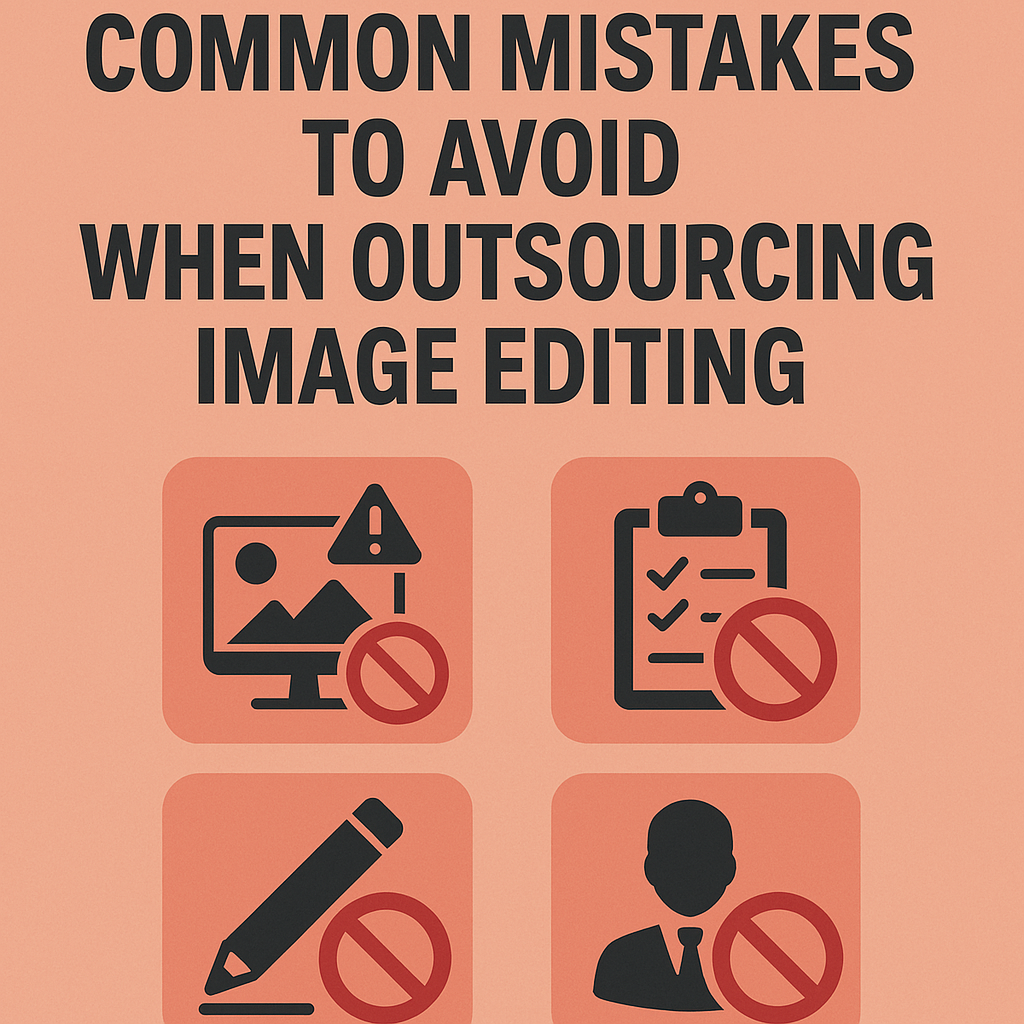
Outsourcing image editing can be a great way to save time and leverage specialized skills. However, to ensure a successful collaboration and high-quality results, there are several common pitfalls to watch out for. Here’s a guide to help you navigate the outsourcing process effectively.
1. Not Defining Clear Goals and Expectations
One of the biggest mistakes is failing to clearly outline what you need. Before starting, define your project goals, the style of editing you prefer, and the specific deliverables. Providing examples of desired outcomes can help the editor understand your vision.
2. Choosing the Wrong Service Provider
Take your time researching potential image editing services. Look for reviews, testimonials, and portfolios. Ensure that the service provider has experience relevant to your project type, whether it’s e-commerce, portrait editing, or creative retouching.
3. Skipping the Test Phase
Before committing to a long-term contract or large project, always request a small test edit. This allows you to assess the quality of work, the turnaround time, and how well the editor understands your requirements.
4. Lack of Communication
Establishing strong communication is crucial for successful collaboration. Set up regular check-ins to discuss progress and provide feedback. Use clear, concise language and avoid jargon that could lead to misunderstandings.
5. Neglecting to Discuss Revisions
Clarify the revision process upfront. Understand how many revisions are included in the cost and the timeline for making changes. This will help manage expectations and avoid disputes later on.
6. Overlooking Copyright and Ownership Issues
Ensure you discuss who will retain the rights to the edited images once the work is finished. This is vital to avoid legal issues and ensure you can freely use the images for your intended purposes.
7. Ignoring Quality Control
Once you receive the edited images, review them thoroughly before using or distributing them. Check for consistency with your brand guidelines and look for any errors. A robust quality control process will save you trouble down the line.
8. Assuming All Editing Styles are Equal
Different editors have different specialties. For instance, a photographer specialized in wedding photography may not excel at product photo editing. Make sure the assigned editor has the right skills for your specific project requirements.
9. Not Considering Time Zone Differences
If you’re outsourcing to a provider in a different time zone, plan your communication and deadlines accordingly. Delays in feedback can impact your project timeline, so it’s essential to establish a realistic schedule that accommodates both parties.
10. Failing to Build a Long-Term Relationship
Outsourcing might feel like a transactional process, but consider building a long-term relationship with your editor. Familiarity with your style and preferences can improve efficiency and results over time.
Conclusion
Outsourcing image editing can significantly enhance your workflow and the quality of your visual content, but it’s essential to navigate the process thoughtfully. By avoiding these common mistakes, you can establish a productive partnership and achieve outstanding results in your image editing projects.
Copy
Regenerate


